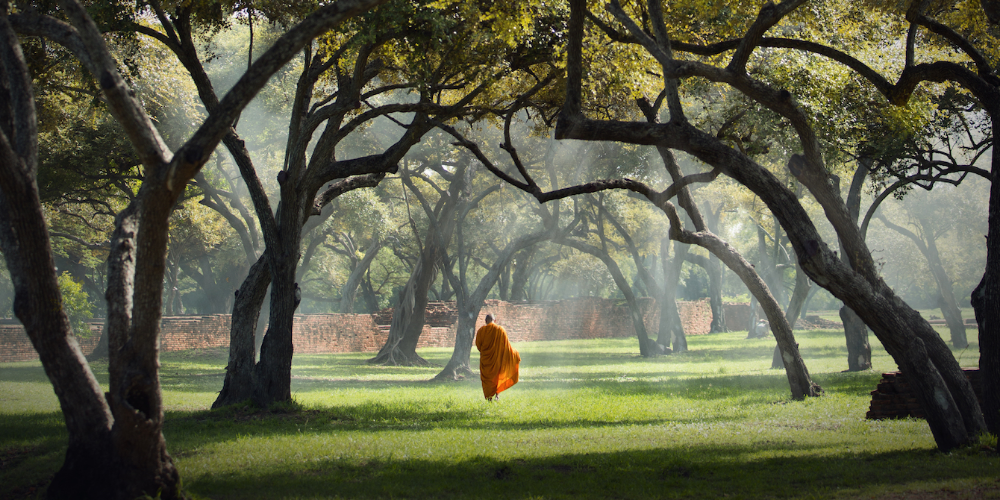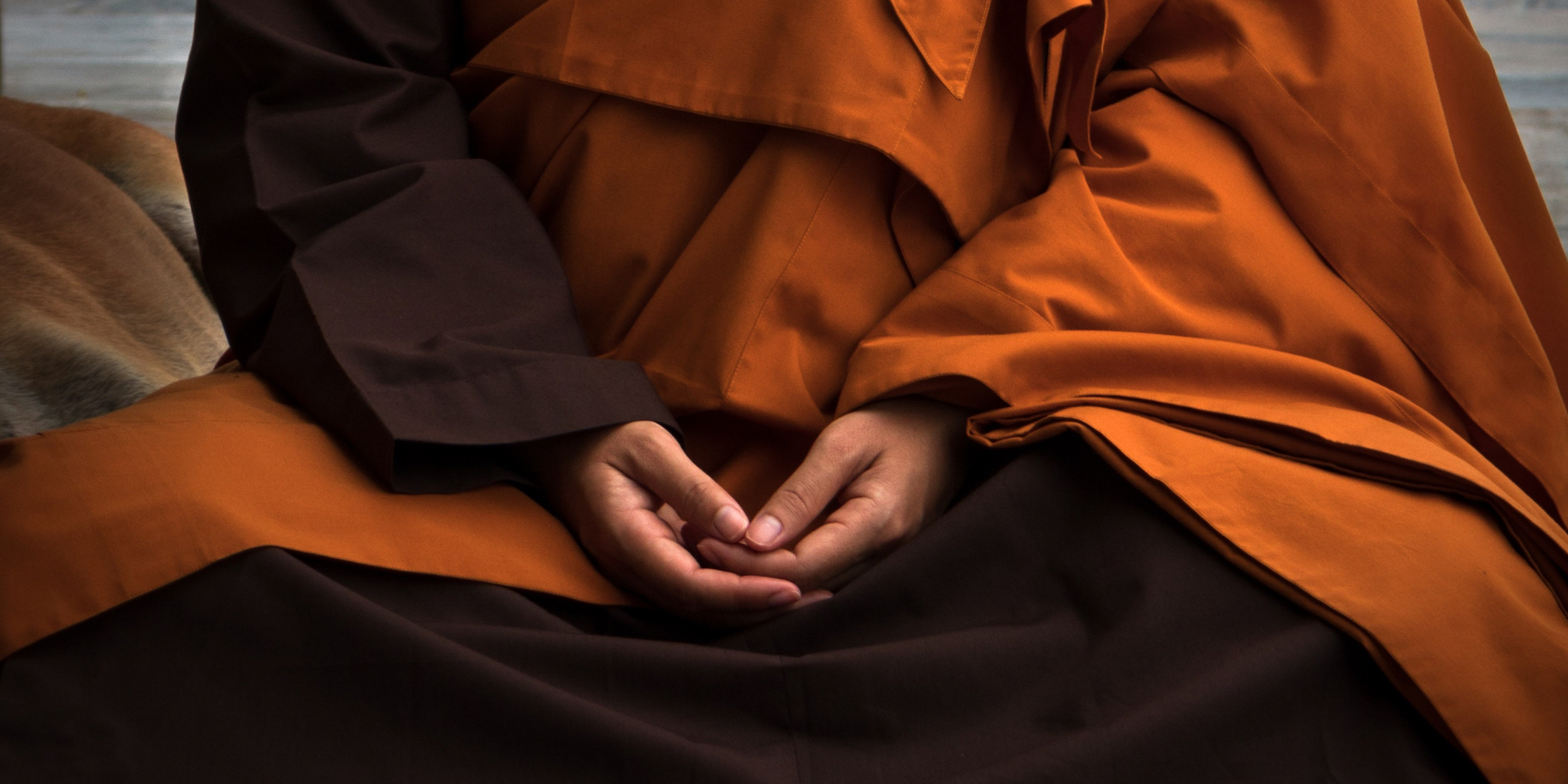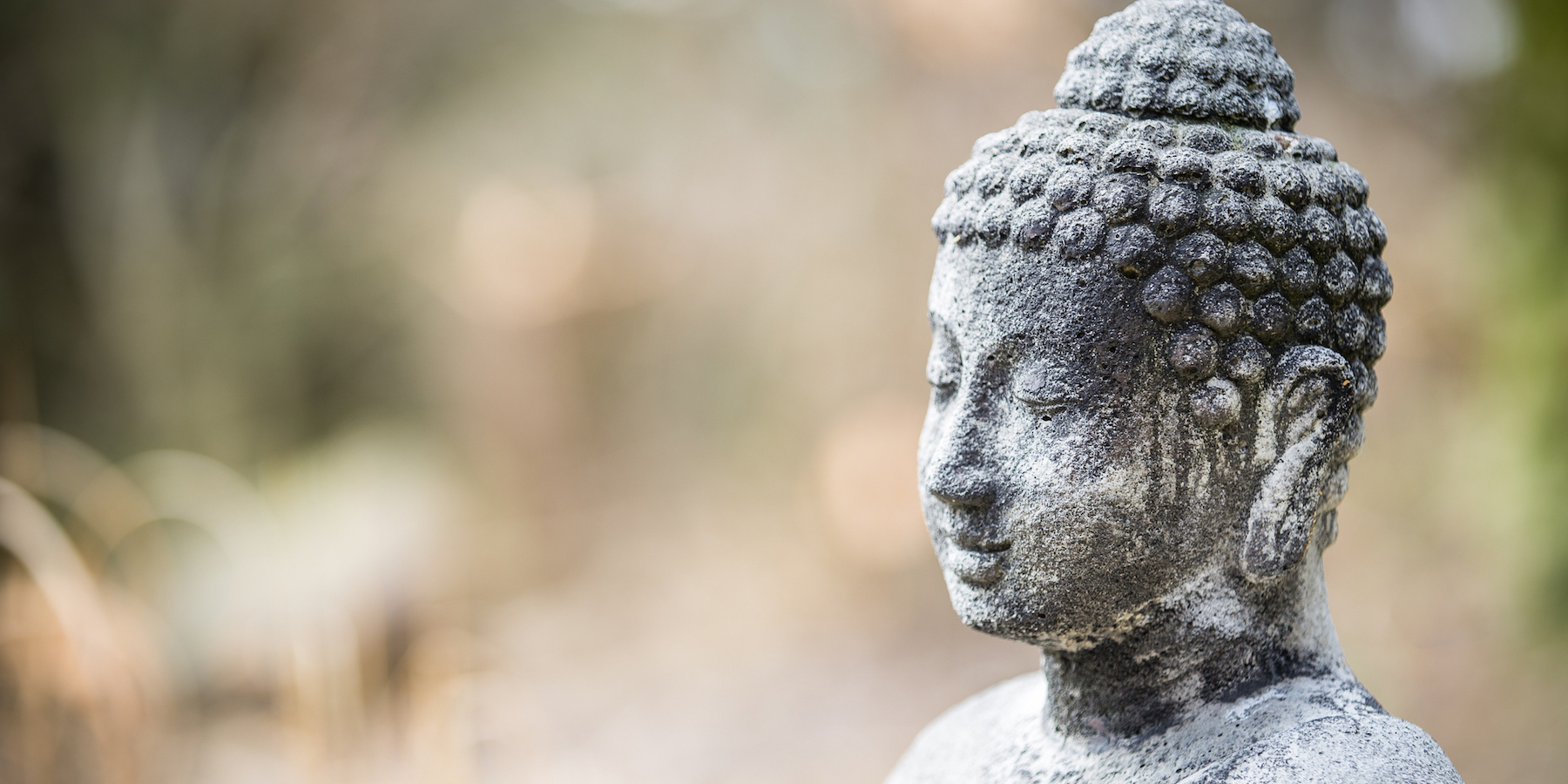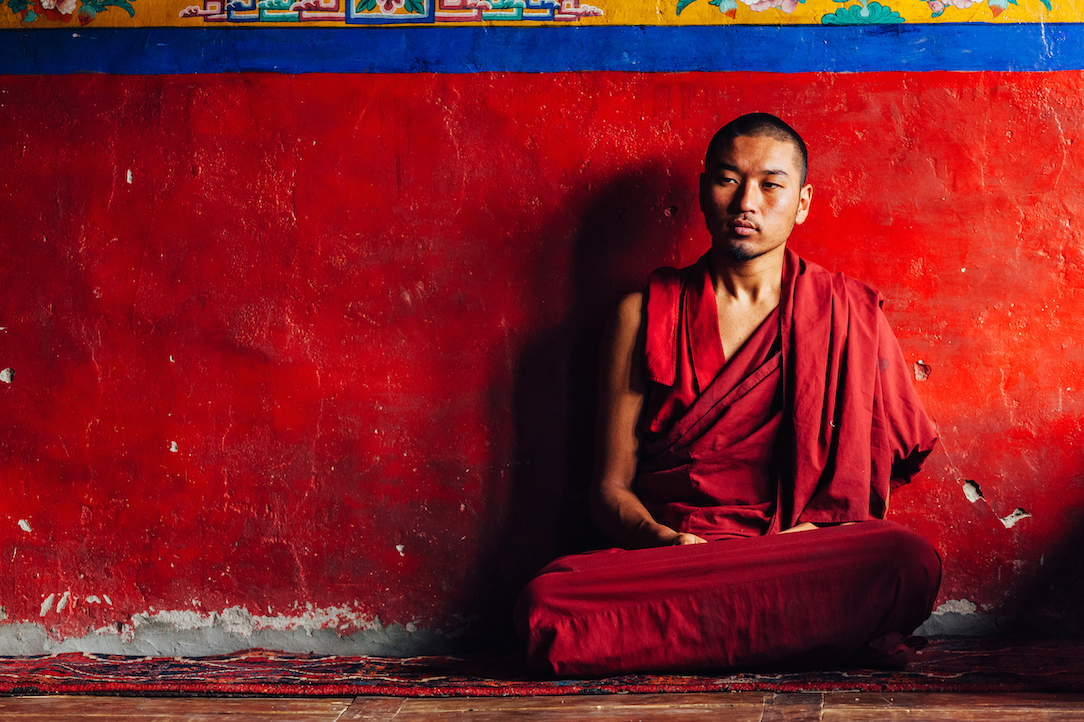Scott Tusa reflects on the Four Seals of Buddhism and what it means to be a Buddhist.
Buddhism is a 2,600 year-old living tradition stemming from the teachings of the historical Shakyamuni Buddha (c. 563 BCE to 483 BCE). A living tradition means that it survives both through the preservation of the words of the Buddha, and the direct experience of these words extent in the minds/hearts of realized practitioners. Though the Buddha taught a variety of methods and views that incorporate complex philosophies, meditation practices, and vows of conduct, at the end of the day, the Buddha taught only one Dharma. This one Dharma is the resounding drum of the true nature of reality; that nothing, either self or other, exists independently in and of itself.
Enlightenment Beyond Concepts & Ideas
From the resultant perspective, our innate awakened essence has and will always be with us. Only because it is temporarily obscured, not unlike having a cataract in the eye, do we need a path to help remove the blockage. Here, a path (Sanskrit: Yana) very much refers to the act of traveling, as it is in motion, helping us to arrive at our destination.
There is a debate on whether Buddhism is a philosophy, science, or religion. I feel that this kind of discussion is a waste of time, as what we now experience as Buddhism has aspects of all three. I also think that it is crucial to acknowledge that Buddhism is not a monolithic tradition, as it is made up of a variety of lineages, interpretations, and approaches to its practice. Despite this, we can find specific belief structures and philosophies in common across its various branches. Here, belief is less about what ideologies one ascribes to, and more about how we fully engage a working hypothesis through a process of learning, reflection, and meditation. I find this very inspiring, as although the Buddha taught unique philosophical positions, these were merely to point us to the road of our journey. Ultimately Buddhism acknowledges that beliefs are provisional, and the result, enlightenment is beyond concepts and ideas.
Read more: In another article, Scott Tusa explains what Buddha-nature is and its part within the Buddhist path.
The Four Seals Of Buddhism
The teachings on the Four Seals (or three marks) form the foundational principles of the Buddhist path. A Buddhist practitioner intends to elicit a direct experience of these seals through a process of self-inquiry and meditation. What this process reveals over time is a profound recognition and insight into the nature of our experience, and what can liberate us from confusion and dissatisfaction. An orientation towards, and a willingness to inquire into these Four Seals is what it means to be a practicing Buddhist (whether one proclaims to be or not).
These Four Seals of Buddhism are:
- All compounded things are impermanent
- All contaminated phenomena are, by nature, unsatisfactory
- All phenomena are empty of self-existence
- Nirvana is beyond extremes
What is in a seal?
Here, a “seal” is referring to a kind of universal mark of authenticity. It is a way to come to some common consensus on what exactly is going on with our underlying perception of reality. Ultimately, we need to authenticate these seals through our own direct experience, not being satisfied with mere blind belief or faith alone. Uncovering these Four Seals for ourselves is what releases us from suffering (in all of its forms), revealing the fully awakened state of Buddhahood.
Before Scott Tusa focuses on the Four Seals of Buddhism individually you might want to pause for a moment with this guided meditation:
Discover thousands of free guided Buddhist meditation practices, talks and music tracks to experience the timelessness of the Dharma.
All compounded things are impermanent
When two things (or more) come together, they are bound to change. This observation is one of the foundational principles of Buddhism expressed in this first seal of impermanence. Here, the very conditions that bring two or more things together also become the causes of their disintegration.
When we truly embrace this first seal of impermanence, we cease swimming upstream. So much of our time is wasted trying to make permanent what has already begun the process of disintegration. When we deny this simple truth, we suffer.
When we remember that things are impermanent, we are less likely to be enslaved by our assumptions, rigid beliefs (both religious and secular), value systems, and or blind faith. We begin to know that things are not entirely under our control and never will be, so there is no expectation for things to go according to our hopes and fears. There is a lot of freedom in this.
All contaminated phenomena are, by nature, unsatisfactory
Contaminated can be a harsh word to stomach. Here the meaning is referring to a general confusion in how we relate to our emotions, thoughts, and perceptions. On the surface, this includes our habit to take what is impermanent as permanent. From here, the confusion deepens as we mistake the causes of dissatisfaction and suffering to be the causes of happiness. Ultimately, this is all based on the most deep-seated confusion of perceiving an independent self where one cannot be found.
In the Buddha’s first teaching on the Four Noble Truths, he asked us to “know suffering.” What’s encouraged here is an ongoing inquiry into the nature of where true satisfaction lies. Typically, our firmly held beliefs and habit patterns prevent us from seeing clearly into what is causing us pain. We blame outside forces, direct our dissatisfaction back onto ourselves, and generally fall prey to expectations and fears. The premise here is that none of these will allow us true happiness. Instead, they keep us spinning on the wheel of dissatisfaction, always looking outward for solutions.
All phenomena are empty of self-existence
As we inquire into the nature of impermanence and dissatisfaction, we may begin to touch this third seal of Shunyata. Here we are finally uncovering some of the most profound truths regarding the nature of the self, how we interpret our reality, and how exactly that interpretation might be undermining our greater freedom.
Shunyata is a Sanskrit word that encapsulates the Buddhist principle that nothing exists in an independent, autonomous, singular, or permanent way. It asks us to look deeper into our experience to see if the way things are appearing is in accordance with how they are. This recognition is a hidden truth, as it only becomes apparent upon investigation. Once pointed out, investigated, and seen, the process of unwinding our habits of reification can begin. From a Buddhist perspective, this process undermines the very root cause of our suffering.
Unfortunately, our habits, and more specifically, our way of believing much of what we think are heavily ingrained. It takes a courageous heart to question our ideas, feelings, and perceptions. The Buddha taught the tool of meditative awareness to help us along in this process.
Meditative awareness helps us to strengthen a mind of objective observation. Initially, this allows us more agency in skillfully responding to challenging internal or external situations, as we naturally experience more space in between our perception and reaction. Over time this same meditative awareness can develop into more profound insight into the nature of how we are identifying with our experience. Like opening a closed fist, again and again, the path of insight acts to interrupt our habits of fixation and reification repeatedly, until our dualistic clinging is entirely exhausted. Its complete exhaustion is known as Nirvana or awakening.
Nirvana is beyond extremes
I find the qualification of “beyond extremes” really interesting here. In this context, an extreme is something that either exists permanently and independently or doesn’t exist at all. So Nirvana or awakening is beyond the extremes of existence and non-existence.
Nirvana is not a conditioned state of happiness that we achieve, but more like the shedding of all that was getting in the way of us experiencing the rawness of how things are. With it comes completely boundless and non-referential compassion that sees the confusion of others, and acts to help them eliminate that confusion. There is no savior complex here, as there is no truly existent savior or saved. It is merely the dream-like job of nudging someone awake from their dream-like fantasy or nightmare.
Read more: Buddhist monk Karma Yeshe Rabgye reflects on eight Buddhist precepts and how to adhere to them on a day of observance and self-restraint.
Living The Dharma
The Buddhist path is fundamentally a process of shedding that which is not in accordance with the nature of reality. It is about being fully awake and sober to what is causing us to circle within the cocoon of our ego-reification and suffering. Whomever we are, whatever we believe, this path is available to us. These Four Seals of Buddhism can be our guidelines if we choose them. Over the years, I have found them incredibly helpful in redirecting me back to an inquiry and curiosity about my life and how I experience it. When we engage them within a process of learning, reflection, and meditation, they have the potential to make our life truly meaningful.
Scott Tusa does not just offer an insightful reflection in the Four Seals of Buddhism. Read his essay about asking an open question and how it gives freedom.







